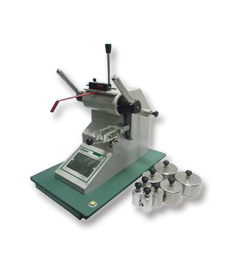
NewsInformation Center
Demystifying Tearing Tester: What You Need to Know
2023/07/14
A tear tester is a common test instrument used to evaluate the tear strength and tearing properties of materials under stress. Here is some key information you need to know:
1. Principle of operation:
The principle of operation of a tear tester is based on holding a test specimen between two fixtures and then applying a tensile force at a controlled rate, ultimately causing the specimen to tear. The test measures the mechanical property parameters of the material during the tearing process.

The principle of operation of a tear tester is based on holding a test specimen between two fixtures and then applying a tensile force at a controlled rate, ultimately causing the specimen to tear. The test measures the mechanical property parameters of the material during the tearing process.

2. Types:
Tear testers can vary depending on the type of test specimen and area of application. Common types include single arm tear testers, double arm tear testers, and customized testers for specific applications.
Tear testers can vary depending on the type of test specimen and area of application. Common types include single arm tear testers, double arm tear testers, and customized testers for specific applications.
3. Parameter Measurement:
Tear testers can measure a number of parameters, including tear force, tear strength, and tear break area. These parameters provide an assessment of a material's resistance and performance when subjected to a tearing force.
Tear testers can measure a number of parameters, including tear force, tear strength, and tear break area. These parameters provide an assessment of a material's resistance and performance when subjected to a tearing force.
4. Sample Preparation:
Proper sample preparation is critical for accurate test results. Different standards and applications may require samples of specific size and shape. Samples are usually cut into specific geometries and then clamped between fixtures.
Proper sample preparation is critical for accurate test results. Different standards and applications may require samples of specific size and shape. Samples are usually cut into specific geometries and then clamped between fixtures.
5. Testing standards:
Testing of tear testers is usually performed in accordance with specific international or industry standards. Common standards include ASTM D1004 (Plastic Tear Strength), ISO 34-1 (Rubber Tear Strength), and ASTM D1938 (Film Tear Strength). Following applicable standards ensures consistent and comparable testing.
Testing of tear testers is usually performed in accordance with specific international or industry standards. Common standards include ASTM D1004 (Plastic Tear Strength), ISO 34-1 (Rubber Tear Strength), and ASTM D1938 (Film Tear Strength). Following applicable standards ensures consistent and comparable testing.
6. Data analysis:
The tear tester provides a series of data points that indicate the response of the material during the tearing process. These data can be analyzed and calculated, for example, by plotting tear force versus displacement curves or calculating average tear strength.
The tear tester provides a series of data points that indicate the response of the material during the tearing process. These data can be analyzed and calculated, for example, by plotting tear force versus displacement curves or calculating average tear strength.
7. Instrument Calibration and Maintenance:
The Tear Tester needs to be calibrated and maintained on a regular basis to ensure its accuracy and reliability. This includes checking and adjusting load cells, keeping fixtures clean and calibrating control equipment.
The Tear Tester needs to be calibrated and maintained on a regular basis to ensure its accuracy and reliability. This includes checking and adjusting load cells, keeping fixtures clean and calibrating control equipment.
8. Areas of application:
Tear testers are widely used in various industries such as plastics, rubber, textiles, paper and packaging materials. By evaluating the tearing properties of a material, aspects such as its suitability, quality control and product design can be determined.
Tear testers are widely used in various industries such as plastics, rubber, textiles, paper and packaging materials. By evaluating the tearing properties of a material, aspects such as its suitability, quality control and product design can be determined.
It is important to understand the characteristics and operational requirements of a tear tester in order to correctly select the appropriate instrument and perform effective testing. Always design and perform tests in accordance with relevant international standards and industry requirements.
Previous: Interpreting and Analyzing Test Results from ASTM D2061 Zipper Strength Testing
N e x t : What's difference between fiber morphology analyzer and fiber friction tester?



